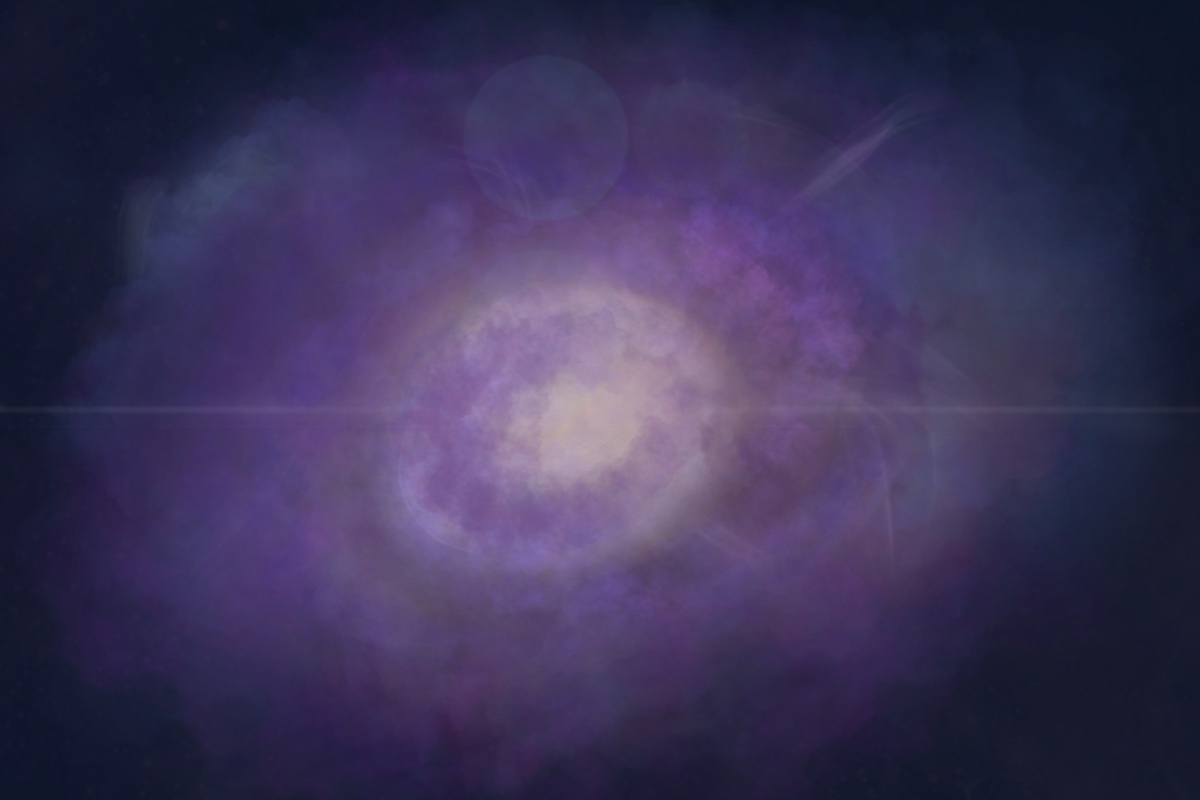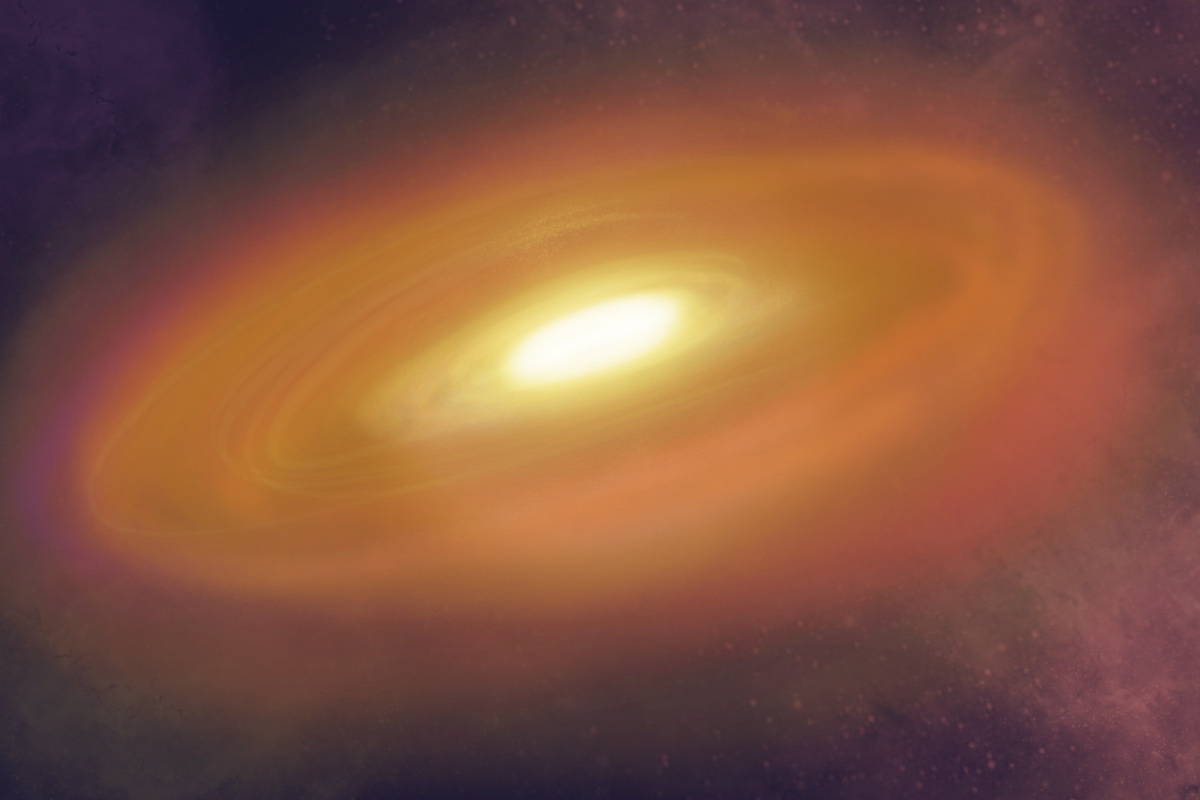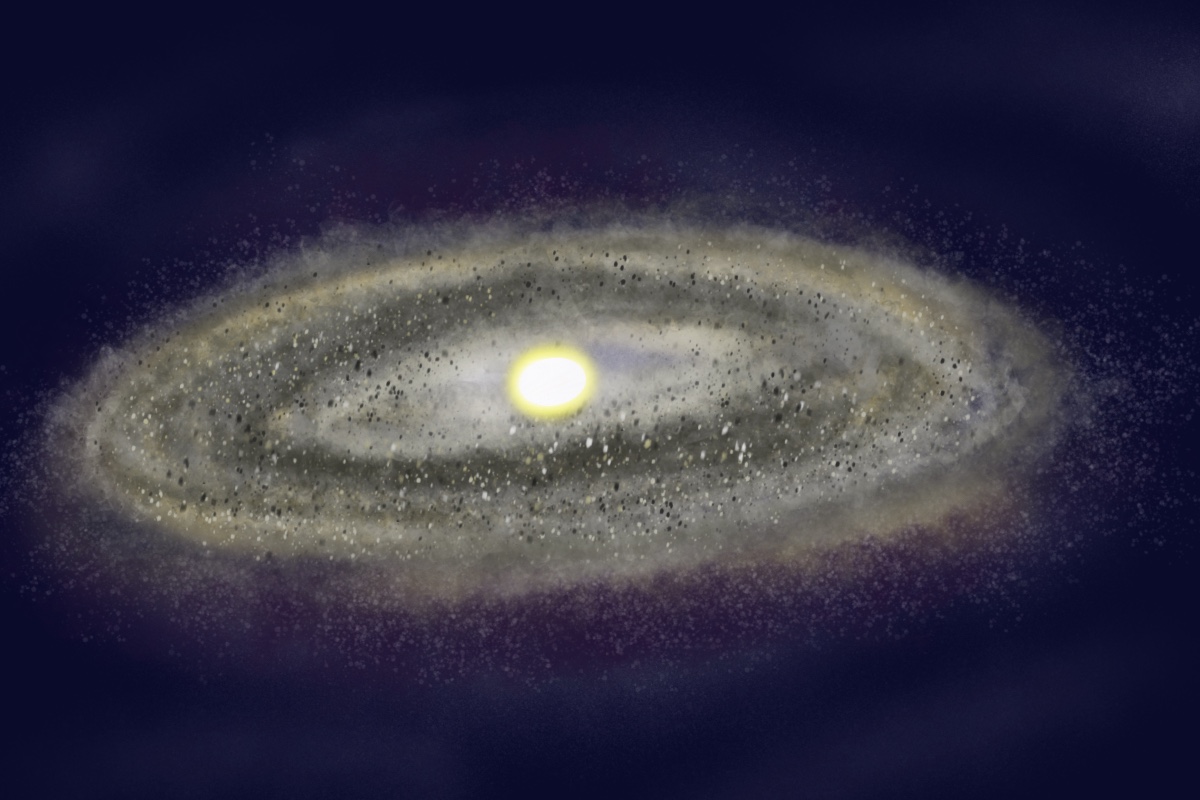Formation of the Solar System
It’s hard to believe that there was once a time when the Solar System didn’t exist. Instead, a massive cloud of dust and gas filled the area that is now home to the Sun and its family of planets, moons, comets, asteroids, and meteoroids. This cloud, known as a molecular cloud, was just one of countless such clouds hidden within the interstellar medium - the vast space between stars in the Milky Way galaxy. These molecular clouds contain the raw materials for stars and planets, acting as swirling, whirling stellar nurseries. All it takes is a disturbance, such as a nearby supernova explosion, to trigger the collapse of one of these clouds, setting off the chain of events that leads to the formation of a fully-fledged solar system. About 4.6 billion years ago, one such event occurred, igniting a new star and forming a collection of weird and wacky worlds around it. But how exactly did the Sun and its planets come from such a cloud?
Around 4.6 billion years ago, part of a molecular cloud located in a patch of interstellar space began to collapse in on itself under its own gravity. The cause of the collapse might have been through a disturbance, like shockwaves from the explosion of a nearby star (a supernova), or the gravitational influence of another molecular cloud or passing star. The collapsing region, known as the solar nebula, started to spin and flatten into a disk. A bit like somebody making a pizza in a way - a giant pizza made of stardust. Most of the material was pulled towards the centre of the disk, where it would eventually form the Sun. The rest of the material in the disk contained the building blocks for the planets and other objects that would make up the rest of the Solar System.

As the solar nebula continued to collapse, the central region became increasingly dense and hot, forming a protosun - the early version of the Sun. The surrounding disk of gas and dust, known as the protoplanetary disk, continued to spin around this central mass. Although the protosun hadn’t yet started nuclear fusion, it was on the verge of becoming a full-fledged star.
Within the protoplanetary disk, particles of dust and ice began to collide and stick together, forming larger clumps called planetesimals. Over time, these planetesimals grew bigger as they attracted more material through gravity. This process of accretion led to the formation of protoplanets - baby planets! In the outer, colder regions of the disk, icy planetesimals that would later become comets also began to take shape.
As the protoplanets continued to grow, they cleared their orbits of smaller debris, gradually forming the planets we know today. Closer to the protosun, where it was hotter, rocky planets like Earth, Mars, Venus, and Mercury formed. In the colder, outer regions, gas giants like Jupiter and Saturn, and icy giants like Uranus and Neptune, took shape. During this time, the remaining icy planetesimals were pushed to the outer edges of the solar system, forming regions like the Kuiper Belt and the Oort Cloud, where comets reside.
While planets were forming, so too were many of their moons. Some moons formed from the leftover material in the disk around their parent planets, while others were captured by the planet’s gravity. Earth’s Moon is thought to have formed when a Mars-sized body collided with the young Earth. The impact was so intense that it ejected a massive amount of debris into orbit around Earth. This debris eventually coalesced and formed the Moon.
Once the Sun ignited and began generating its own heat and light energy through nuclear fusion, it produced powerful solar winds that blew away the remaining gas and dust in the Solar System. This process, known as the clearing of the nebula, left behind the planets, moons, and other objects that had already formed. The Solar System was now mostly free of leftover debris, with the planets settled into their stable orbits around the Sun.
With the solar nebula cleared, the Solar System took on the structure that we recognise today. The planets and their moons settled into their stable orbits around the Sun, and smaller bodies like asteroids and comets remained in various regions. Comets, formed in the early stages, were either captured in distant orbits in the Kuiper Belt and Oort Cloud or occasionally sent on paths that bring them closer to the Sun. Although the solar system was now formed, it continues to evolve as planets interact gravitationally, and comets and asteroids occasionally alter their paths.
Even though the Solar System mostly formed billions of years ago, it is still evolving. The Sun will continue to burn for billions of years, gradually changing as it ages. The planets, comets, asteroids, and other objects within the solar system will continue to interact, leading to occasional collisions or shifts in orbits. Planets can still acquire moons by capturing passing asteroids, and collisions amongst existing moons can destroy them and create new moons, or even ring systems around planets. Rocky debris, can also be shed into space, becoming meteors that wander the Solar System or sometimes fall to the surface of planets to form craters called meteorites.
The Solar System is just one of many in the universe. The Milky Way galaxy alone contains billions of stars which formed in their own molecular clouds, just like the Sun. Many of these stars have their own planetary systems which have evolved in their own unique ways. Some stars and planets will be similar to the ones in the Solar System, others will be completely different. And who knows, there might even be a star just like the Sun and a planet just like Earth existing out there somewhere!
- Accretion: The process by which planetesimals stick together and grow in size, eventually forming protoplanets and planets.
- Interstellar Medium: The space between stars in a galaxy, filled with thinly spread gas and dust.
- Kuiper Belt: A region of the Solar System beyond Neptune, populated by icy bodies and dwarf planets.
- Molecular Cloud: A cold, dense region of gas and dust in the interstellar medium where stars are born.
- Nuclear Fusion: The process by which the Sun produces energy, by fusing hydrogen atoms into helium in its core.
- Oort Cloud: A distant, spherical region surrounding the Solar System, where long-period comets are thought to originate.
- Planetesimal: A small, solid body formed from dust and gas in the protoplanetary disk, which can eventually grow into a planet.
- Protoplanet: A developing planet that forms from planetesimals through the process of accretion.
- Protoplanetary Disk: A rotating disk of gas and dust surrounding the protosun, from which planets and other solar system objects formed.
- Protosun: The early stage of the Sun, formed from the collapse of the solar nebula, before nuclear fusion began.
- Solar Nebula: A giant cloud of gas and dust that collapsed to form the Sun and the planets of our Solar System.
- Supernova: A massive explosion that occurs when a star reaches the end of its life cycle, often triggering the formation of new stars.







